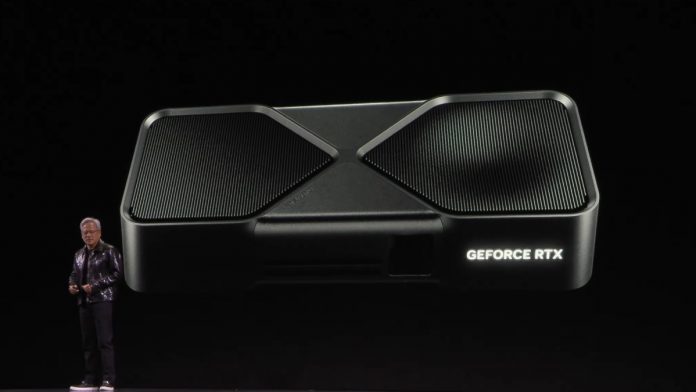
NVIDIA recently unveiled its GeForce RTX 50 series lineup, featuring the RTX 5090, 5080, 5070, and 5070 Ti, all powered by its latest Blackwell architecture. The entire lineup promises substantial improvements over their predecessors, but the RTX 5070 has garnered particular attention. Positioned as the biggest beneficiary of NVIDIA’s latest DLSS 4 with Multi-Frame Generation technology, the RTX 5070 reportedly performs just as well as last-gen’s flagship, the RTX 4090, in gameplay performance metrics.
However, amid NVIDIA’s marketing highlights about the “amazing” AI performance of the RTX 5070, the hardware side hasn’t met the expectations. One critical point is its 12GB VRAM, which feels barely the minimum for a $549 GPU released in 2025 and especially raises eyebrows when compared with the likes of the GTX 1080 Ti, an 11GB card that Nvidia released nearly eight years ago. On the flip side, Intel gained plenty of praise for the 12GB Intel Arc B580 which retails from $249.
Modern gaming demands more VRAM
The concerns about 12GB VRAM are legitimate, especially given the increasing demands of modern games. For instance, the recently released Indiana Jones game lists 12GB as the minimum requirement for playing with ray tracing enabled. To increase graphical fidelity, the memory demands rise to 16GB or even 24GB. This is just one example of the growing VRAM requirements in modern AAA gaming, making the RTX 5070’s VRAM configuration feel dated for enthusiasts aiming for future-proof builds. On top of that, even the RTX 5060 Ti features 16GB as Nvidia ditches the 8GB model from last gen.
Though the RTX 5070 benefits from faster GDDR7 memory, the limited VRAM poses challenges for gamers looking to push settings to high or very high levels. VRAM usage increases significantly with higher resolutions and ultra-quality textures. While NVIDIA’s DLSS 4 aims to balance higher-resolution gaming with smoother frame rates, many gamers prioritize native performance at high settings over AI-driven upscaling, which can compromise image quality and latency.
RTX 5070 probably should have come with 16GB of VRAM
It can be said in a way that NVIDIA is testing the waters with AI and machine learning to improve texture compression, potentially paving the way for broader adoption in future releases. However, gamers argue that NVIDIA could have simply provided more VRAM—ideally 16GB—in the RTX 5070. It is worth noting however that, even today, 4K gaming remains niche with Steam’s hardware survey, reporting that 56% of gamers still use 1080p, followed by 1440p, with 4K gaming far away from the norm.
That said, there is no doubt about the fact that the RTX 5070 is going to offer some game-changing improvements using DLSS 4 and Blackwell architecture. But even with that, its 12GB VRAM remains an avoidable drawback and it seems like NVIDIA just keeps missing the mark when it comes to VRAM amount.

